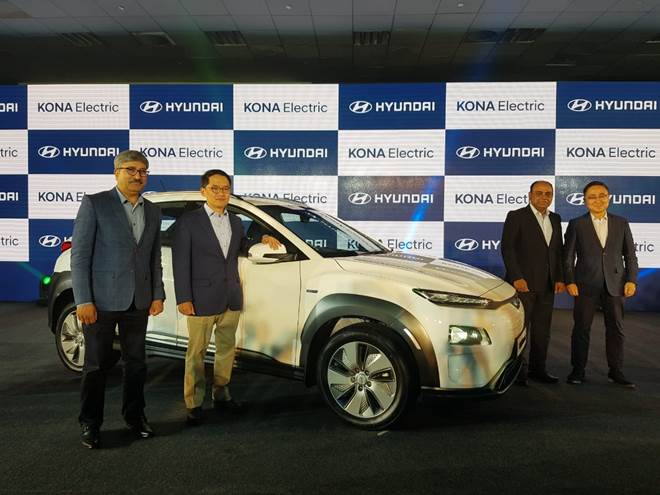Hyundai Kona is not the first electric car in India, but it’s the first that appears to negate all the negatives usually associated with an electric car—limited driving range, in particular—at least on paper. The Kona Electric, the world’s first electric compact SUV, was launched in India last week. Priced Rs 25.3 lakh, it’s available for sale in 11 cities. These are Bangalore, Chandigarh, Chennai, Delhi, Gurgaon, Hyderabad, Kochi, Kolkata, Lucknow, Mumbai and Pune. We drive it on the Buddh International Circuit, the Formula 1 track near Delhi.
What is the Kona?
Globally, the Kona is available in two battery pack options: One with a capacity of 64kWh and another rated at 39.2kWh. Hyundai India has launched the 39.2kWh model.
How much is its range?
According to the Worldwide Harmonised Light Vehicles Test Procedure (in the EU), it has a range of 289km, but Hyundai India is claiming 452km (certified by the Automotive Research Association of India). The ARAI has tested it on the MIDC (Modified Indian Driving Cycle) mode, or ‘ideal’ conditions. While we haven’t driven it on public roads, it should easily be able to cover more than 300km on a full charge (the EU test is based on rigorous real-driving data).
Is 300km enough?
Very few people drive more than 100km per day, within city limits. There’s mathematics to support the case. Suppose you live in Gurgaon, and even if you drive across two states, to your office in Noida, the return journey won’t be more than 100km. Throw in a meeting in Delhi and a dinner, and the maximum you might drive is 130km. In a car that travels 300km on a full charge, it shouldn’t be a problem.
The problem is an almost complete lack of public charging stations, as also overnight charging support in most high-rise residential apartments.
Where can you charge it?
Customers will be provided with two chargers when they purchase the Kona: a portable charger and an AC wall box charger. The portable charger can be plugged into any three-pin socket (it gives 50km range in three hours). The wall box charger gives 50km range in one hour. The dealers selling the Kona will support the customer for installing the sockets.
Hyundai is also setting up fast chargers at a few Indian Oil pump stations in Delhi, Mumbai, Bangalore and Chennai. These can charge 80% of the battery in about 50 minutes. Also, all dealers selling the Kona are equipped with charging points. For emergency support, Hyundai has a ‘charging car’ that can be called in case your Kona runs out of power.
How long does the battery last?
The battery comes with a warranty for eight years and up to 1.6 lakh kilometres.
How does it drive?
The Kona drives like the future of mobility should do. It’s lightning quick from any speed to any speed, because the 136PS of power is delivered instantly by the electric motor, unlike a petrol/diesel vehicle where the engine needs to reach a particular RPM to deliver maximum power. It goes from 0-100kph in just 9.7 seconds, far faster than most conventional cars. It has regenerative braking, which turns the mechanical energy generated by the wheels into electricity when you decelerate, and then stores it in the battery. And you can drive it without using the brake pedal at all, except for emergency braking (https://bit.ly/2GcQzcu).
Should you buy it?
At Rs 25.3 lakh plus taxes, the Kona is expensive. But if you were planning to consider, say, a top-end Jeep Compass or a Hyundai Tucson (these are similarly priced but bigger SUVs), you can probably reconsider your decision (if, of course, you will use the Kona only for urban driving). And with Hyundai’s charging support thrown in, the deal is somewhat sweetened. With the Kona, you also get exclusivity and the feeling of setting a benchmark, not to forget the fun-to-drive aspect of an electric car.

